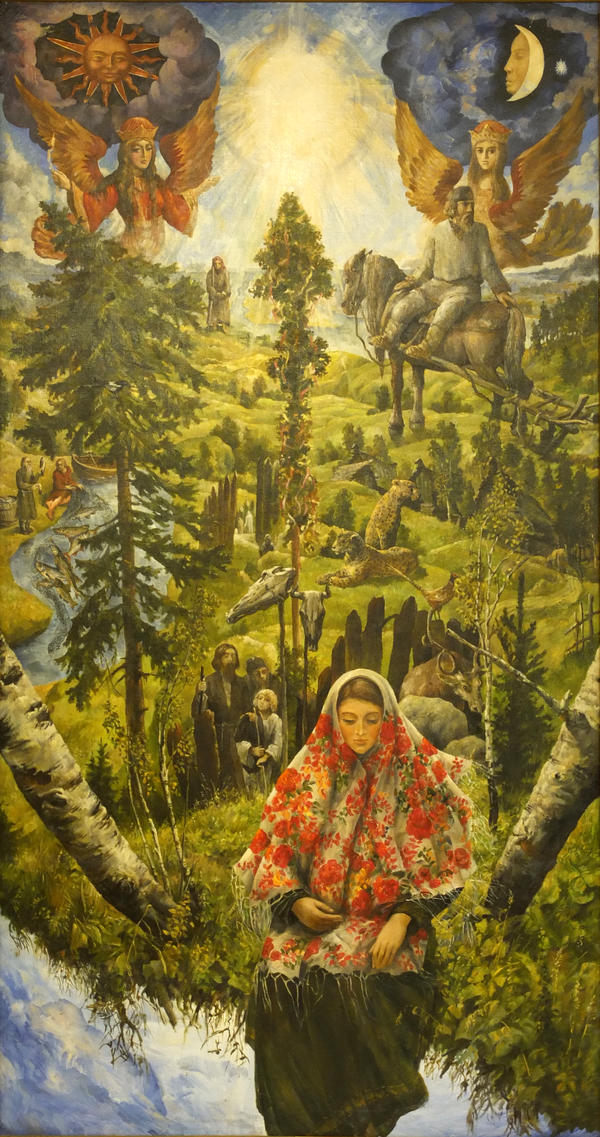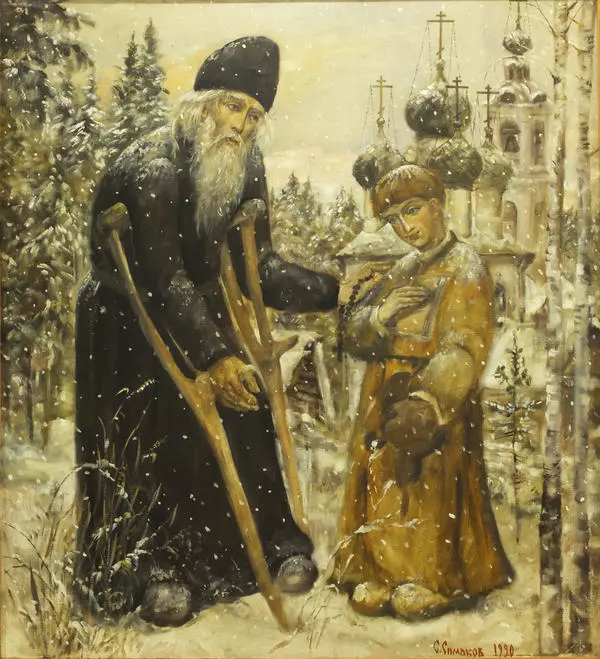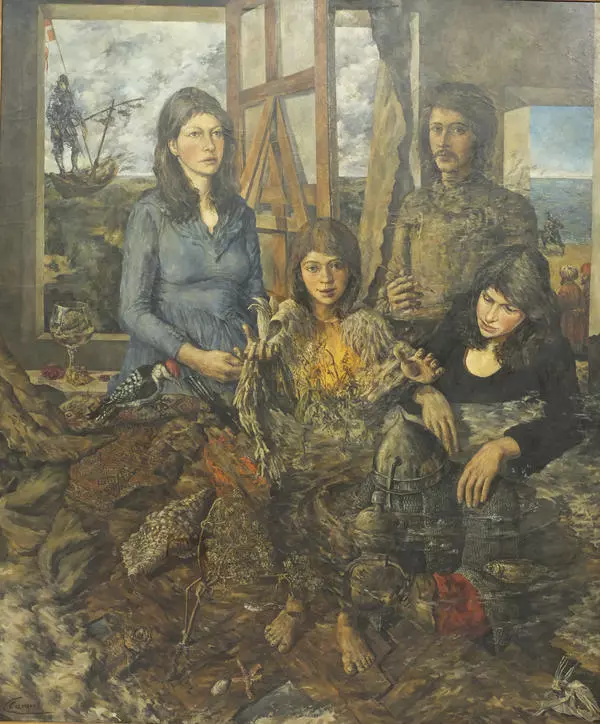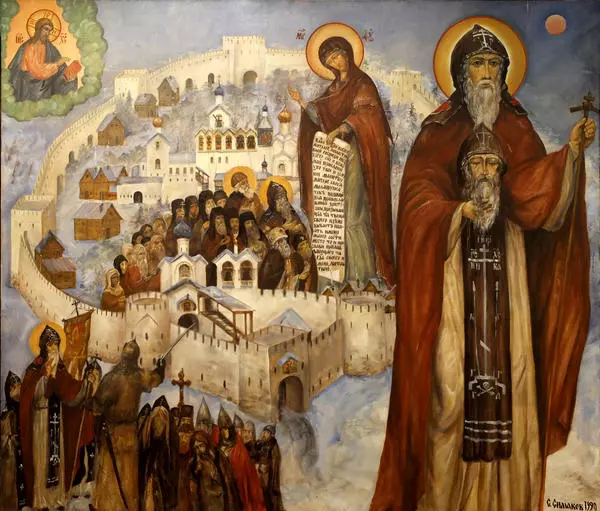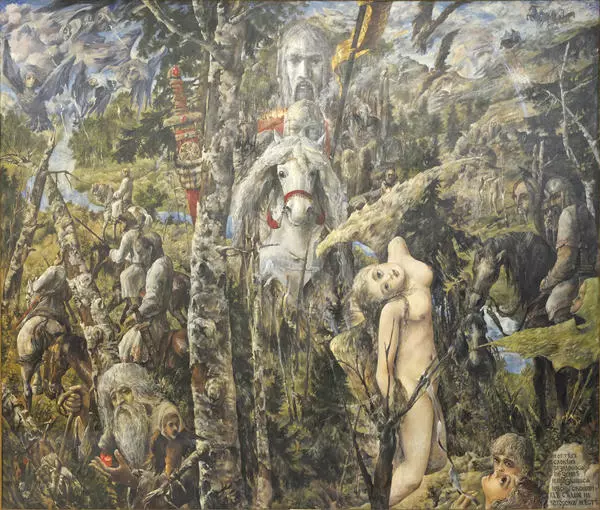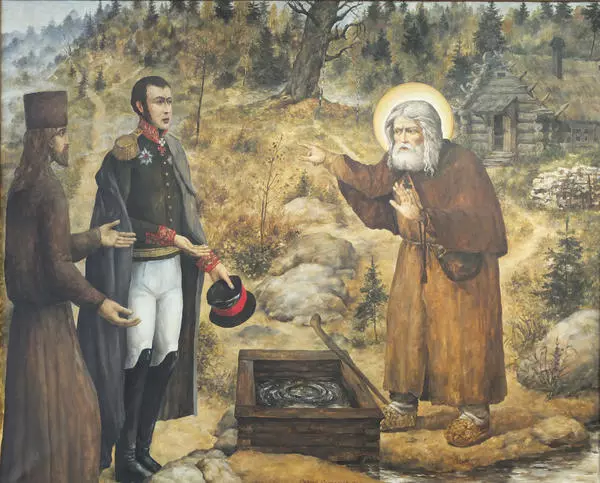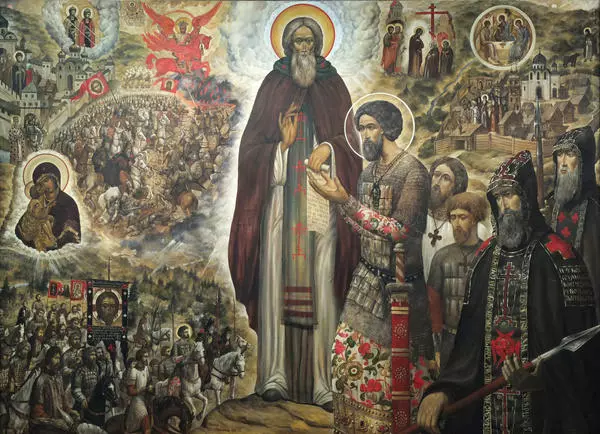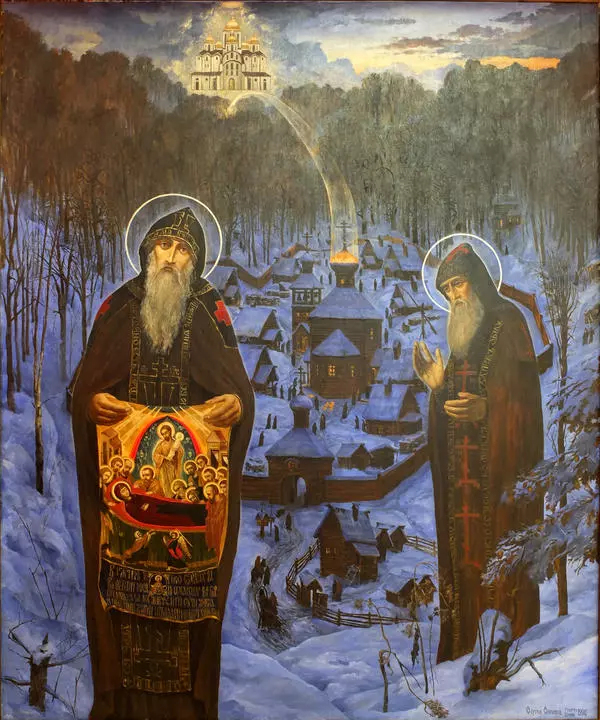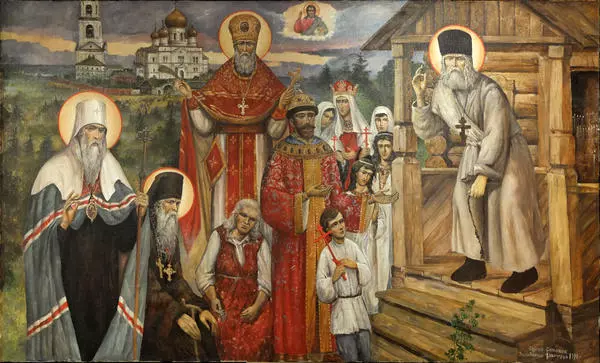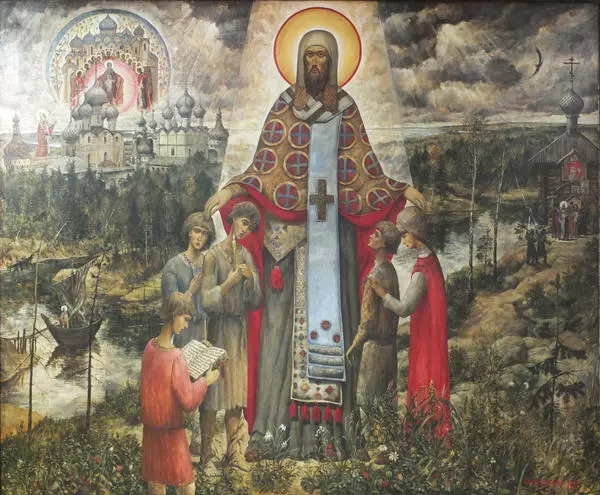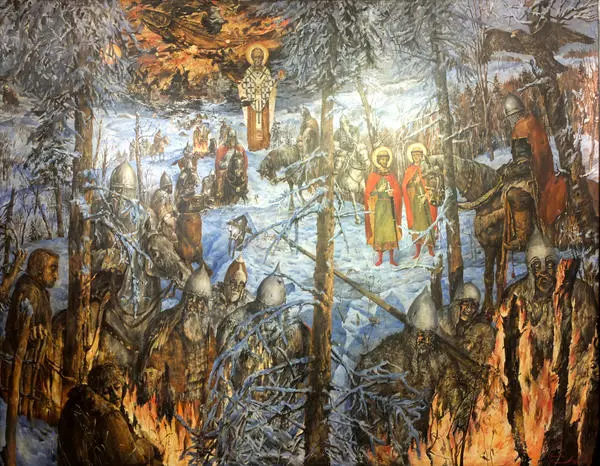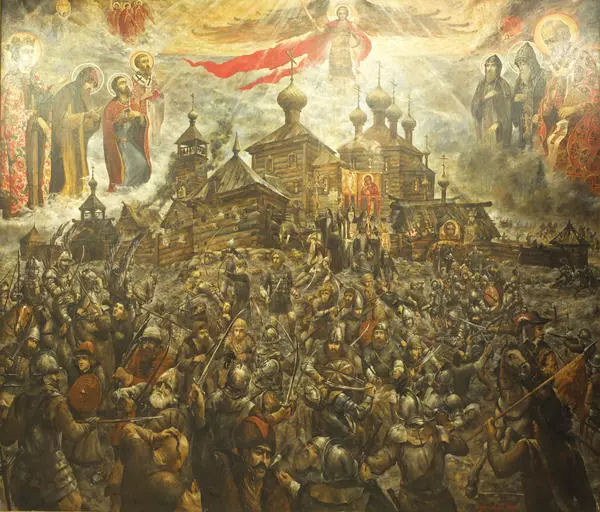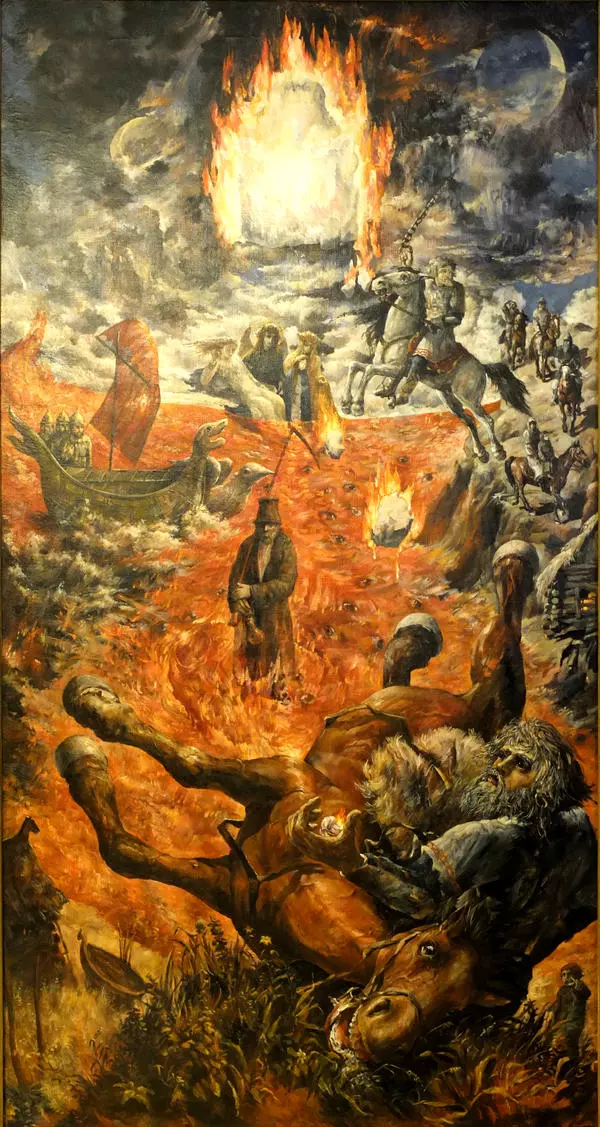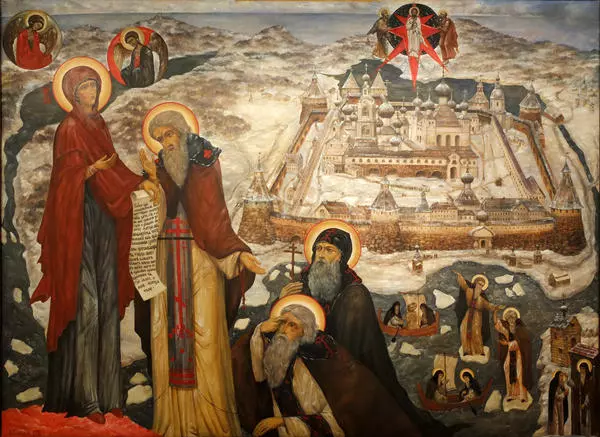Russian painter Sergey Simakov used to devote many of his early surrealistic works to heathen themes. By mid 1980s he had created around three hundred works, not to mention graphic sheets. They included dozens of large-scale paintings. The painter created the Morning of Slavs triptych in 1984-85s. The Tree of Life painting became the left part of the work of art.
In the centre of the painting, there is a fabulous evergreen tree of life or a world tree, twined with ribbons, which is a symbol of endless renewal and continuous development. It is considered that this image links together three areas of the universe: its crown rises in heaven, the trunk is on the ground, and its roots grow in the underworld.
Behind the tree, there is a winding road. Through the hills, it leads to a settlement behind palisade where the roofs of the houses are crowned with wooden carved horse heads. Behind the village, the painter depicted a disproportionately large figure of a plowman sitting on a horse harnessed to a plow. To the left there are people catching fish with a net, and images of celestial bodies hang over them. This heathen idyll is disturbed by the image of a girl who is sitting on the edge of surface, which leads to the sky.
In line with Sergey Simakov’s idea, her figure personifies the image of the Slavic soul, which anticipates the approximation of the new, Christian epoch. In her thoughtfulness, the girl is not even noticing the wind, which blows the border of the dress and the ends of the shawl with bright pictures of flowers. Behind her one can see a procession headed by a boy who is taking blind old men away from the tree of life.
In the centre of the painting, there is a fabulous evergreen tree of life or a world tree, twined with ribbons, which is a symbol of endless renewal and continuous development. It is considered that this image links together three areas of the universe: its crown rises in heaven, the trunk is on the ground, and its roots grow in the underworld.
Behind the tree, there is a winding road. Through the hills, it leads to a settlement behind palisade where the roofs of the houses are crowned with wooden carved horse heads. Behind the village, the painter depicted a disproportionately large figure of a plowman sitting on a horse harnessed to a plow. To the left there are people catching fish with a net, and images of celestial bodies hang over them. This heathen idyll is disturbed by the image of a girl who is sitting on the edge of surface, which leads to the sky.
In line with Sergey Simakov’s idea, her figure personifies the image of the Slavic soul, which anticipates the approximation of the new, Christian epoch. In her thoughtfulness, the girl is not even noticing the wind, which blows the border of the dress and the ends of the shawl with bright pictures of flowers. Behind her one can see a procession headed by a boy who is taking blind old men away from the tree of life.

